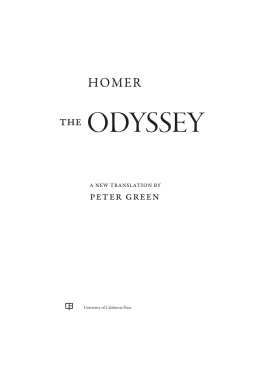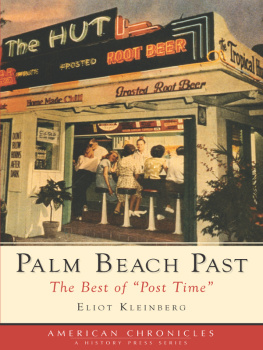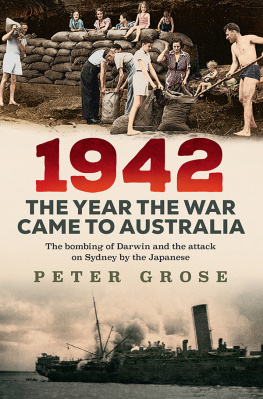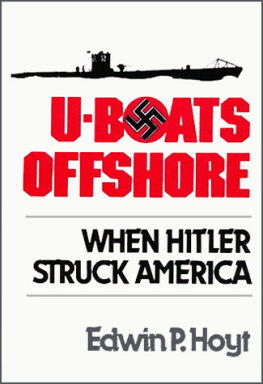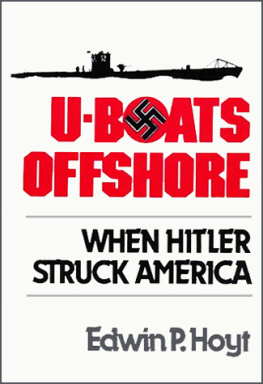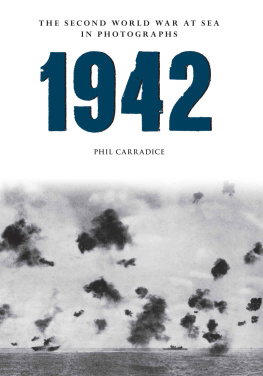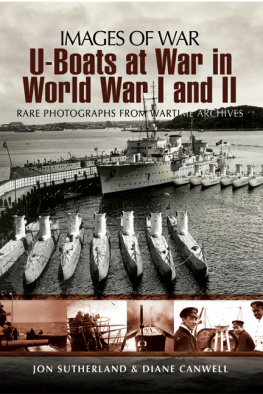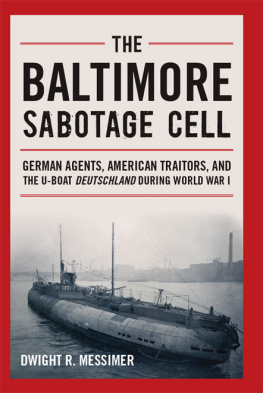Torpedo Junction
TORPEDO JUNCTION
U-Boat War Off
Americas
East Coast,
1942
Homer H. Hickam, Jr.
Naval Institute Press
Annapolis, Maryland

BLUEJACKET BOOKS
The latest edition of this work has been brought to publication with the generous assistance of Marguerite and Gerry Lenfest.
Naval Institute Press
291 Wood Road
Annapolis, MD 21402
1989 by the United States Naval Institute
Annapolis, Maryland
All rights reserved. No part of this book may be reproduced or utilized in any form or by any means, electronic or mechanical, including photocopying and recording, or by any information storage and retrieval system, without permission in writing from the publisher.
First Bluejacket Books printing, 1996
ISBN 978-1-61251-578-6 (eBook)
The Library of Congress has cataloged the hardcover edition as follows:
Hickam, Homer H., 1943
Torpedo junction: U-Boat war off Americas East coast, 1942 / by Homer H. Hickam, Jr.
p. cm.
Bibliography: p.
Include index.
1. World War, 19391945Naval operationsSubmarine. 2. World War, 19391945Naval operations, German. 3. World War, 19391945CampaignsNorth Atlantic Ocean. 4. Atlantic Coast (U.S.)History. 5. Gulf Coast (U.S.)History. I. Title.
D591.H53 1989
940.54'51dc19
89-3005
CIP

 Print editions meet the requirements of ANSI/NISO z39.48-1992 (Permanence of Paper).
Print editions meet the requirements of ANSI/NISO z39.48-1992 (Permanence of Paper).
15 14 13 18 17 16
To the United States Coast Guard Cutter Dione (WPC 107). Wherever she is, may she be happy in the knowledge that she served her country well.
The massacre which the U-boats were able to enjoy along the Atlantic coast in 1942 was as great a national disaster as if saboteurs had blown up half a dozen of our biggest munitions factories.
SAMUEL ELIOT MORISON
I will show that the U-boat alone can win the war... nothing is impossible to us!
ADMIRAL KARL DOENITZ
The only thing that ever really frightened me during the war was the U-boat peril... the U-boat attack was our worst evil. It would have been wise for the Germans to stake all upon it.
WINSTON CHURCHILL
CONTENTS
T his thoroughly documented and detailed account of the 1942 slaughter of ships by U-boats off the East and Gulf Coasts of the United States is by far the best that I have read covering that black episode in our naval history. During the first six months of 1942, foreign invaders dominated our coastal waters for the first time since the War of 1812. While the navys attention was riveted on the far Pacific and the Japanese Combined Fleet, arguably the best navy in the world at that time, the Allied merchant marine was being decimated on our Atlantic doorstep. When midyear arrived, more tonnage had been sunk by a handful of U-boats than had been put down in the Pacific by the entire Japanese Navy from Pearl Harbor to Midway! Painful though the losses were, they might have proven terminal except for the intervention of Hitler, who refused to release more U-boats from his own intuitive projects. As a result, there were never more than a dozen U-boats manned by 500 or so men on the American station at any time, and the first did not arrive until weeks after war was declared. That such a small force could inflict such damage was a damning indictment of both our readiness and our priorities.
As we read this fascinating account, it seems incredible that we were so unprepared after having observed for two years the U-boats and their performance against the British. The often amateurish efforts of our forces in the early months is not remarkable; such is usual at the onset of war. These were the same men who two years later as seasoned combat veterans were sweeping the seas. But the absence of ASW ships, doctrine, and training; the refusal to set up convoys; the employment of the few available warships in solo sweeping and patrol operations twenty-five years after it had been proven to be a useless tactic against submarines; and the refusal to employ fleet destroyers against an enemy running amuck only a few miles away defies logic. One answer seems to lie in the orientation and dogmatic personality of Admiral Ernest J. King, COMINCH, and his Pacific-first outlook. Despite the repeated urging of the British Admiralty, for which King had little use, the intervention of President Roosevelt was required to start convoys and provide adequate forces to escort them. In fairness to King, he had tried two years before to push a program of escort construction, but it was turned down by Roosevelt. When escorted convoys were finally implemented, the U-boats were quickly forced into the less heavily defended Caribbean and Gulf, and finally back to the North Atlantic, where the massive and decisive Battle of the Convoys was fought out in the Bloody Winter of 194243. After their defeat in that battle, the wolfpacks withdrew, and with them went Germanys last chance to avoid final defeat.
Oddly enough, the author of this definitive account of our home-front naval battle of World War II is a decorated army combat officer who served with the Fourth Infantry Division in Vietnam in 196768. But the nearly forgotten battle of 1942 has held a long-time fascination for him, so much so that he even dived down to examine numerous wrecks of that era. This included dives to the U-352 and the U-85 to verify the damage suffered during their final fights, a bit of research above and beyond the call of duty for most writers. He does not content himself with a description of the actions, which in view of the large number of ships sunk could become repetitious, but also deals with the personalities and people who manned the ships and U-boats, as well as those who controlled their destinies from the command hierarchy. This provides interesting insights and welcome relief from the slaughter.
This book should also give us a greater appreciation of the hard life of the small boys in this coastal war. At the time, many of us on the big Atlantic convoys, often engaged in pitched battles with up to thirty combatants involved, were prone to assign second-class status to the coastal fighting. But the seas were as rough off Hatteras as off Iceland, the escort ships were much smaller and more uncomfortable, and the losses were horrifying. Most of the ASW vessels were slower than the U-boats, less experienced, and outgunned. It is surprising that more were not destroyed by U-boat gun action. Yet Icarus and Thetis, small 165-foot cutters, were able to successfully attack and sink the larger U-352 and U-157. One of their sister cutters, the Dione, is used by the author to represent all of the small ASW vessels out on that lonely and deadly sea. He returns often to her and follows her as she fights from tragedy to triumph.
Next page




